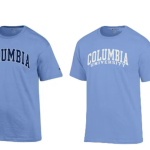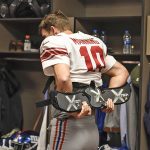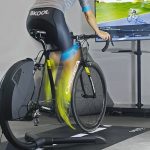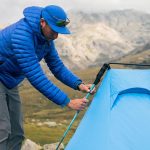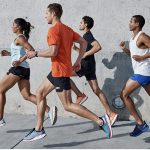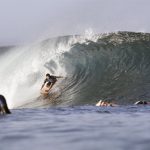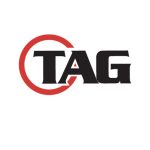The continued consolidation of the Bicycle, Outdoor and SnowSports industries helped boost the top-line sales numbers for vendors yet again in the first quarter. Momentum shifted back to the vendors in Q1 as their margins and profits remain healthy while the retail sector is feeling continued pressure. Additionally vendor profit growth was only slightly behind sales growth, while retailers saw their profits decline on double-digit sales growth due to seasonality and integration costs.
The B.O.S.S. Report presents an overview of first quarter industry results in the chart on page two. Results are posted for those companies that have reported for the period ended closest to the end of March. Because the report is not a clear picture of the entire industry, BOSS feels the total numbers are less significant than the trending information provided in the percentage increases and decreases.
Total sales for Vendor companies tracked in this quarters report increased 22.2% while net income increased 21.1%. For the second quarter in a row, the results here are in sharp contrast to the total sporting goods industry vendor report produced by Sports Executive Weekly, a sister publication to BOSS. In the broader industry, profit growth outpaced sales growth by a two-to-one margin, with total sales increasing 12.5% while net income climbed 23.2%. In the broader Sporting Goods Market, the higher ROS average was primarily driven by strong performances from K-Swiss, Puma and adidas, while the Specialty Market was held back by weak performances from military-dependant companies and SnowSports.
Companies in the Softgoods sector, which includes Footwear and Apparel, saw profit growth outpace sales growth by roughly 15 percentage points, due primarily to acquisitions by Rocky Shoes & Boots and VF Corp. Phoenix Footwear also saw its sales increase considerably due to its acquisition of Altama footwear, but an unforeseen decline in military sales hurt earnings. The softgoods sector had an organic growth rate of 12.8% sans the acquisition boost.
Deckers was again the biggest gainer for the period with a 45% sales increase, due entirely to organic growth. This brought the companys income up 65%.
On a reported basis, the biggest sales increase for the quarter came from Riddell Bell Holdings, who reported a 209% jump in sales for the quarter, which came entirely from the addition of Bell Sports. Organic growth was flat. Columbia, Lafuma, Timberland, and VF Corp were also big gainers during the first quarter posting double-digit organic sales growth.
Looking at the hardgoods sector, Orange 21 and Shimano lead the way in terms of organic sales growth, while Oakley and Shimano posted the best bottom line performance. Suunto was also a top performer during the quarter with 12% organic sales growth. The Hardgoods sector overall saw sales growth, with more than half of the gain due to acquisitions, but saw profit slide by nearly 50% due to issues with military contracts and Winter Sports. Organic sales growth in the Hardgoods sector was 5.9%.
Return on Sales, which is the measure of net income as a percentage of sales, remained flat at 5.2% when combining both hardgoods and softgoods vendors. The ROS number in the BOSS Specialty end of the business was 370 basis points behind that of the full sporting goods market reported in SEW. The broader market was up 90 basis points to 8.9% of sales. Because some companies report net income and others report divisional results as operating income, it is best to use the ROS measure to look at the performance of a particular company versus its results in the year-ago period, or to assess companies that report on a like-for-like basis.
The B.O.S.S. Report has approached the Hardgoods sector a bit differently for the quarter, opting to exclude the marine electronics divisions of Johnson Outdoors from the report due in large part to BOSSs constituency, which, for the most part, is not in the motorized boat business. The other factor that weighed in the decision was the ability for those businesses to skew the numbers a great deal. The Johnson Outdoors watercraft business is included in the numbers presented on page two.
Biggest losers for the period are the companies that had been relying on military contracts to boost sales in the previous quarters. On the softgoods side, LaCrosse reported a 20% decline in sales due to lost military contracts, and Rocky Shoes & Boots sales would have declined as well if the company had not acquired EJ Footwear, which added $40 million to the top-line. Phoenix Footwear seems to have jumped into this market at the wrong time with their acquisition of the Altama, which primarily produces for the military, and the company is now looking at expanding the non-military aspect of this business. On the hardgoods side, Johnson Outdoors, excluding the marine electronics business, also reported a decline in sales, mainly due to lost military tent orders.
The second segment that posted declines in the first quarter, mainly due to seasonality, was the Wintersports business. The tumultuous weather throughout the different regions of the country created a spotty retail environment with some areas excelling and others stagnating. K2 Sports was the only SnowSports Company to post a sales gain, but the divisions net loss for the quarter nearly tripled. Both metrics were heavily affected by the acquisition of Volkl and Marker.
This quick review is but a summary of results for the quarter. All detailed company financial information can be found in The B.O.S.S. Report issues over the last 60 days and the detailed peer group analysis will be made available in the Sports Executive Research report due later this month.
>>> The decline in Military business is interesting given the on-going conflicts. The word coming from inside the D.C. beltway is that there are large back-orders just waiting for the funding to be allocated

